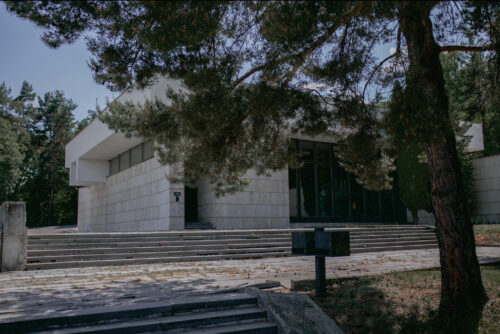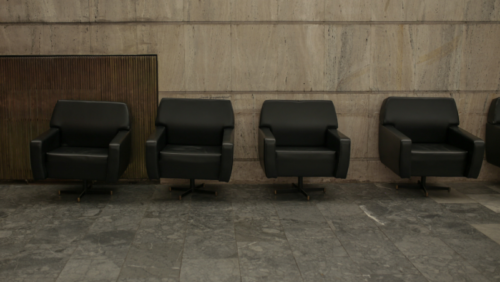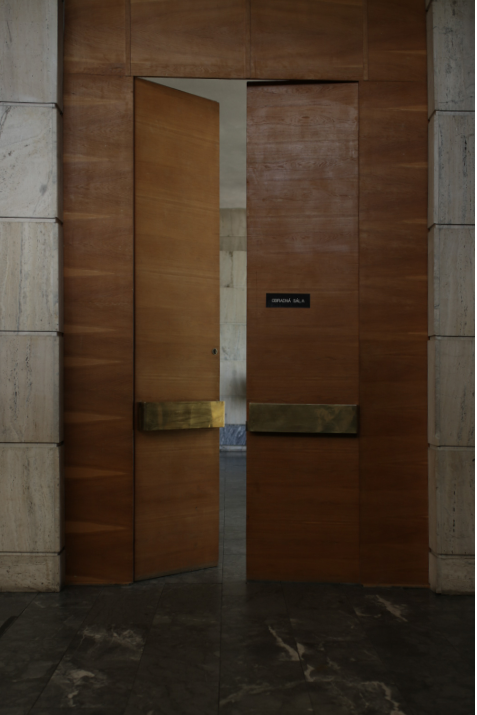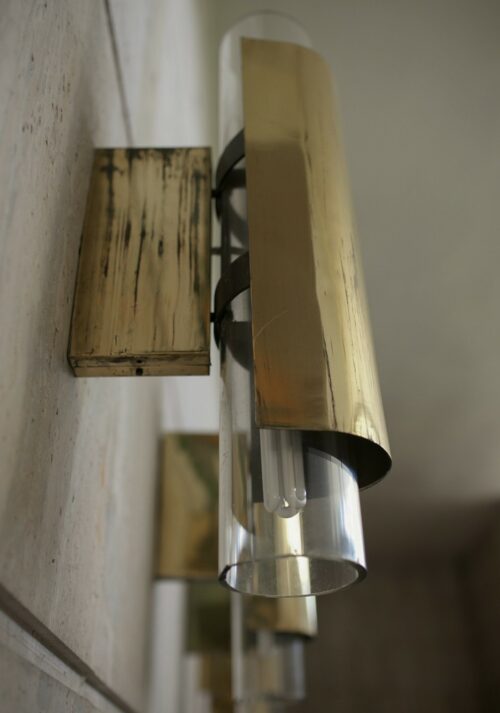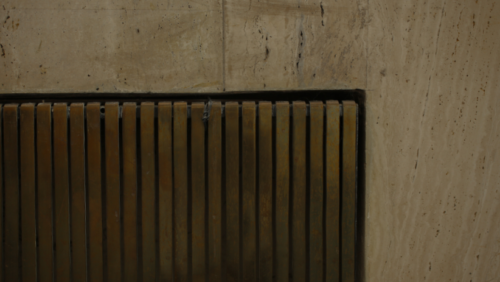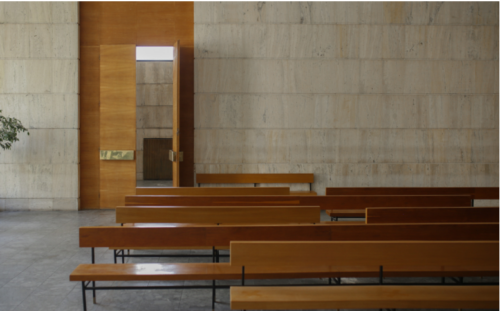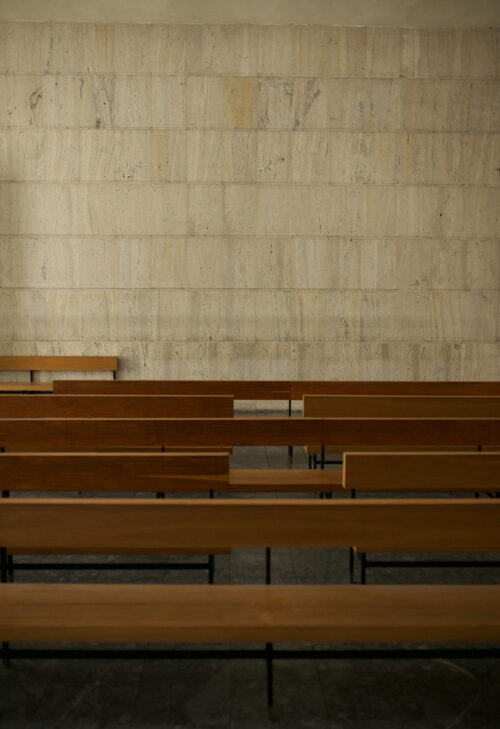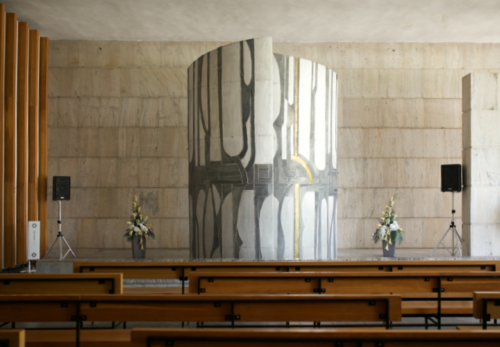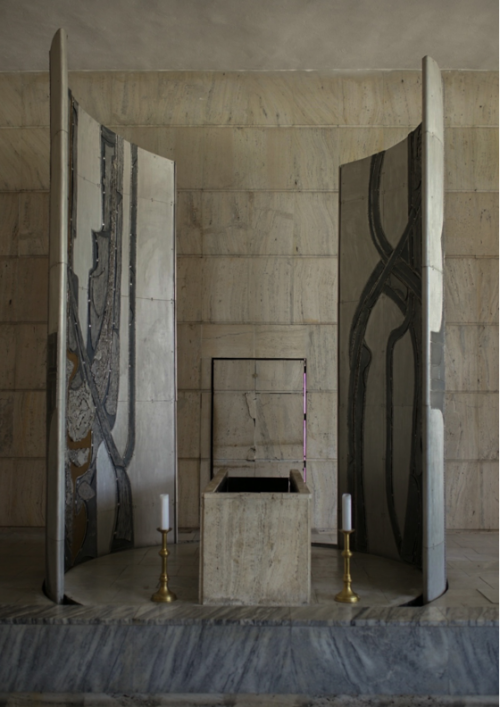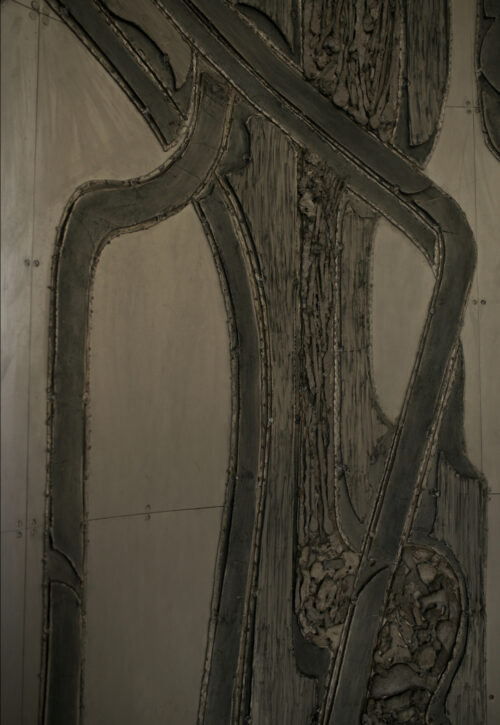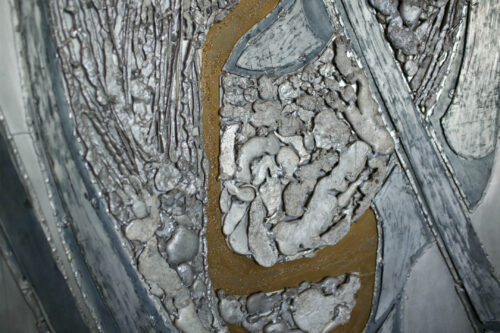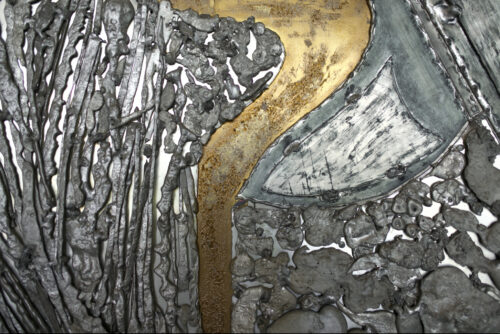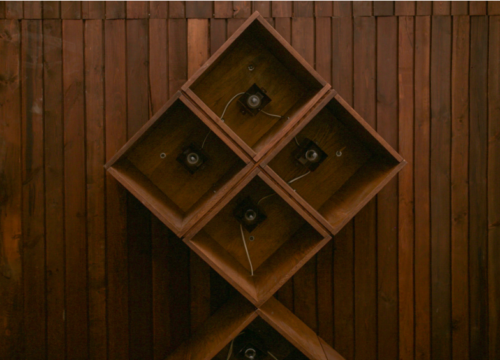Crematorium
Category: Ceremony houses
Architect: Igor Teplan senior
Works of art: Miroslav Ksandr, Elena Bellušová
Location: Brezová 60, Banská Bystrica – Kremnička
Design: 1966–1967
Built in years: 1973–1980

The crematorium building is situated in a picturesque natural landscape on the suburbs of Banská Bystrica, whose character contributes to a spiritual, mystical atmosphere of the place for paying respects. The building consists of two separate building units – the main and adjacent ceremonial facility interconnected with a grading access stairway. The concept of the interior is subordinated to the visual and space concept of architecture, reflected in their clearly predictable and expressively inseparable connection.
Constituents dominating the interior architecture from the operating and visual points of view are the interiors of the ceremony halls that Eva Bieliková described as follows: “The interior character of the space of the today used ceremony hall is distinct from the interior of the mourning hall in the adjacent, original building. Housing a gallery for the organist, the upper part of the ceremony hall has a height extension. The pieces of furniture in the room comprise simple wooden benches and black massive armchairs with upholstery. Lighting is provided by wall lamps containing strip lights in place of the original light bulbs, wrapped in a glass tube covered with a stripe of gilded aluminium. The ceiling design is another interesting concept, bending several times and raising towards the narrow entrance portal. Radiators are wall-mounted in the niches and covered with gilded metal stripes, hiding them in a nice and aesthetic way from the remaining space. The main axis of the hall space is directed to the catafalque, accentuated by the structure with a non-figurative composition by Elena Bellušová. The artistic object situated along the sides of the raised catafalque consists of two semi-arch-shaped wings. By employing a sliding mechanism in the floor, the wings open and close during ceremonies as a ritual. As for the materials, the place is dominated by travertine, characterised by a set of white and light-yellow colour tones. The travertine facing is also used as wall covering, and complemented with marble elements to be seen predominantly on the floor and the catafalque. Marble also covers the side parapet and the slightly raised stage in the front part. Benches and big leaf doors are crafted from pale-coloured wood. The wall separating the mourning hall from the working spaces is fitted with a glass and wood stripe raster. The opposite wall is glazed with brown-glass windows.” [5]
The interior of the original ceremony hall has less light. The visual basis is created by marble floor and wooden panelling. The space is dominated by the catafalque. Hiding entrances to small-size preparatory and warehousing premises, the walls on its sides have wooden panelling. The wall behind the catafalque is stained glass with an abstract-pattern decoration. The opposite wall is glazed, allowing subdued light to enter the room. The rest of the walls in the room are plain walls with a white paint coating. The ceiling has the same dark-wood panelling as used on the window and door frames. The principal pieces of furniture are shaped wooden benches, wooden wall banks with upholstery and an upholstered massive sofa.” [5]
“Even though the buildings have different shapes and interiors, they form a unity and are a signature of one author. Both interiors can serve as examples of well-designed mourning facilities even today, being a sensitive and dignified venue to say farewell. The interiors of both buildings are simple and mystical in some manner. They are dominated by considerable silence. The most noticeable feature that caught my attention was the stained glass that –with its fitting place, colour, and structure– underlines the importance of the entire space and its civility. It is also likeable how the author works with technical features, such as heating units, sliding mechanisms, hidden operational and storage spaces that are so well-incorporated in the building that they are invisible. The artistic works that give a special finishing touch to the place without disturbing the concentration of mourners make a very pleasant impression. To conclude, the interior spaces are of quality and timeless design and despite the original condition of many parts that would need a refurbishing, the interiors create a dignified and ceremonial impression. Their well-thought emptiness and nakedness renders them certain out-of-the box modernity, not being subjected to the current swiftly changing trends.” [5]
- Brána – Krematórium. [Gate – Crematorium.] Website: Výtvarné diela na území Banskej Bystrice 1945-2015. Available at: http://supissoch.ssgbb.sk/dielo/116
- Majlingová Leškanič, Zuzana: Krematórium – katafalk. [Crematorium – Catafalque.] Website: 2016 Pamatihodnosti.sk. Available at: https://www.pamatihodnosti.sk/pamatihodnost/?itemId=128
- Krematórium Banská Bystrica [Crematorium Banská Bystrica.] Website: Works register – The Slovak Chamber of Architects. Available at: https://www.komarch.sk/dielo/113-krematorium-banska-bystrica
- Teplan, Igor ml.: Sprievodná správa o rekonštrukcii. Krematórium Kremnička, Banská Bystrica. [Accompanying Report on Refurbishing. Crematorium Kremnička, Banská Bystrica.]
- Bieliková, Eva: Krematórium Kremnička. [Crematorium Kremnička.] Seminar paper for Public Interior course, Faculty of Architecture and Design STU Bratislava, Summer Term 2021–22
Eva Bieliková
